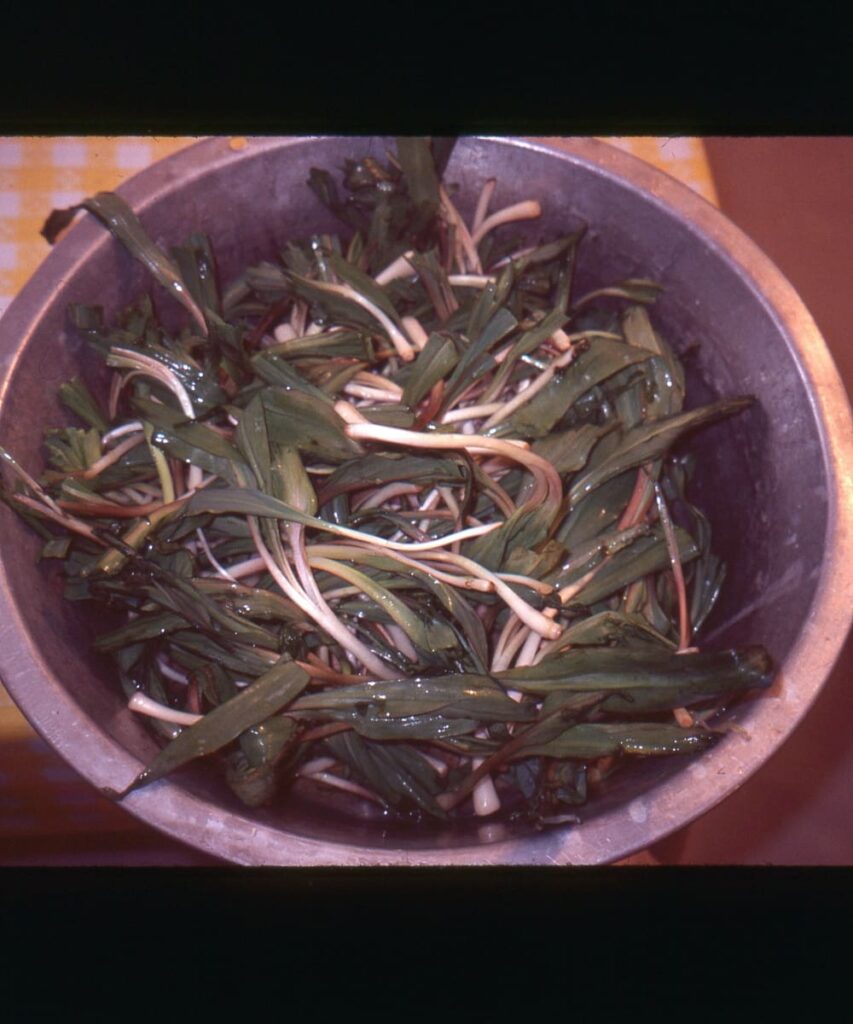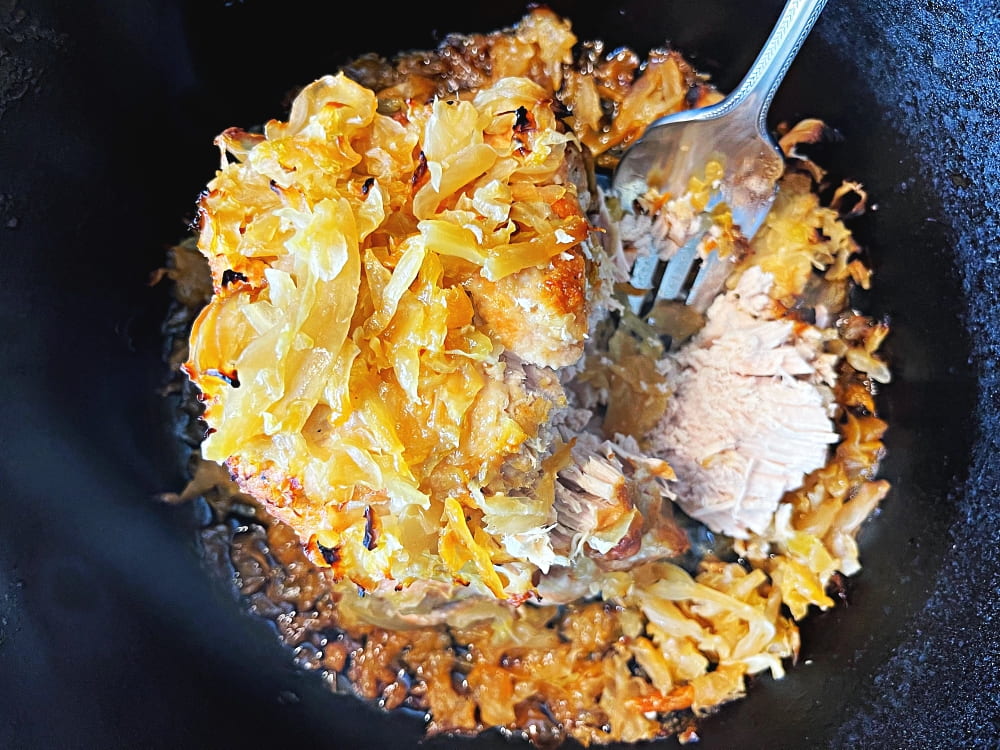MARCH MUSINGS

In my part of the world, March is a month of change, a time of seasonal transition moving from winter, which wore out its welcome many weeks earlier, to spring. Yet March comes in fits and starts, sort of like a lovely but fickle teenaged lass unable to decide which of her many admirers she is interested in from one day to the next. As I’m writing these words it’s sunny, 72 degrees, yellowbells (as I’ve called forsythia all my years), daffodils, bluets, hyacinths, and deciduous magnolias are a-blooming; dogwood buds are a-swelling, and redbuds show hints of purple. Five days ago I got up to a whopper of a frost and temperatures in the low twenties. That’s March for you, but since the month is a harbinger of April, and April the handmaiden for May, I’ll take it with a smile. Then too, the fact that opening day of turkey season is only days away is, in and of itself, enough to put a bit of pep in this old curmudgeon’s step.
Use of the word “old” leads me to a quotation from Mark Twain I stumbled across recently. As anyone who has done a lot of reading likely knows, Twain was something of a perpetual quotation machine. The only American I can think of who really comes even close to rivaling him when it comes to common sense, pithy expressions, shrewd reflection on the human condition, and just the pure joy of words is Will Rogers. Perhaps a better match would be Winston Churchill, but he wasn’t an American (although his mother was and he greatly admired this country). Before I finally get around to sharing the Twain quote I’ll also note that if you want a plentitude of practical wisdom when it comes to quotations on the world of the outdoors, turn to Robert Ruark, Havilah Babcock, and Archibald Rutledge. Their writings are flat-out packed with insight. Anyway, here’s what Twain wrote about the experience of advancing years in his Autobiography: “When I was younger I could remember anything, whether it happened or not; but my faculties are decaying now and soon I shall be so I cannot remember any but the things that never happened. It is sad to go to pieces like this but we all have to do it.”
Old Sam Clemens (Twain’s real name) was on to something, but I’m going to disagree in part. Taken in a certain context, his words suggest dreamy, highly imaginative qualities in youth that any red-blooded youngster should possess. Indeed, if you didn’t play war, battle off marauding Indians, build forts, or deal with outlaws in your youth I have to reckon you experienced some childhood deprivation. Similarly, I think it is one of the distinct privileges of advancing years to be able to indulge in daydreams, tell tales that may have a wee bit of embellishment, and gild the lily of yesteryear with a will. My beloved Grandpa Joe did a lot of that, and I’m perfectly comfortable in ambling along in his tracks.

I’m always glad when the month of March rolls around. It means all sorts of good things—rising trout, gobbling turkeys, blooming wildflowers, spring vegetables in the garden, poke salad, dandelion greens—are in the offing. Of course the pollen is pure “pizen” if you have allergies (I do) and the month’s weather can definitely be fickle. Still, March signals the beginning of the end to winter. In that regard, as old-time mountain preachers from my youth and beyond have been wont to say: “Can I hear an Amen!?” Or actually, maybe hallelujah is even more in order.
Grandpa Joe used to call March the month of hope and renewal. “It’s really a pretty miserable month,” he would opine, because hunting season was closed, it was far too cold to fish for trout (that was in the days when everyone waded wet), and more often than not the weather was ornery. Still, March means that April and May aren’t far away, and just thinking of them lifts my spirits. First thing you know folks with the gumption to get in an early garden will have a mess of black-seeded Simpson lettuce and spring onions, and those with gumption and a bit of knowledge can gather all sorts of delicacies such as dandelion and creasy greens, poke salad, branch lettuce, watercress, and much more.
While musing on March matters, Grandpa Joe would reminisce about memorable experiences from his past associated with this general time of year—a late March snowstorm, “yarbing” (gathering herbs for medicinal use), making sweet syrup from maples (we think of that as something confined to more northern climates, but “tree sweetening” was once fairly common in his home in the Smokies of my raisin’), and the like.
Another fond memory from those long ago days focused on Grandpa’s discussion of turkeys. I never saw one of the grand birds until years after he was gone (he died when I was), but I had read about them in the writings of one of my boyhood literary heroes, Charlie Elliott. Grandpa talked about the special sound gobblers made in the mating season, and according to him, “once you hear it you realize a bird can shake the ground and stir your soul.” Was he ever right on this score, as was the case on so many other things!

It won’t be long until the rites of the spring woods once more arrive (opening day for me is April 3), and already thoughts of being in the woods at dawn move me to the depths of my being. But then so do simpler pleasures connected with early spring. To walk through woodlands where service trees add a splash of white to a grim, grey landscape is to tread through wonder. The same holds true for glimpses of the first flowering bluets, bloodroots peeking through leaf mold, the shiny green of emerging Mayapple leaves, and the first pink of swelling redbud blooms. Early spring uplifts in so many ways, and as I grow older I enjoy the profusion of wildflowers, a parade of color which becomes more beautiful as March gives way to April, and April to May, even more than I used to. Or maybe it would be more accurate to say that in the turkey woods or just wandering, I pause and ponder much more than used to be the case. One of the things age teaches you is to take your time and observe the world around you. Rest assured you are better off for doing so.
Another aspect of March which I have always cherished is associated with the old mountain custom of taking “tonics.” In my long lost youth these came in many and varied forms, from flowers of sulfur and molasses to thin the blood to infusions of sassafras tea for one’s general health. Spring greens such as poke salad did double duty as a purgative, and there were always some who thought even the most nauseous of nostrums could be rendered palatable by being taken with a good slug of peartin’ juice (for the uninformed, that’s moonshine).
Not too long prior to his untimely arrest and subsequent suicide, I had the opportunity to discuss such matters with the late Popcorn Sutton. He was a genuine mountain character and lifelong producer and purveyor of corn squeezin’s. Popcorn’s studied opinion was that “a body needs some properly made likker, along with a mess of trout and bait of ramps and branch lettuce,” to get into spring in proper fashion. Incidentally, if you’ve never heard of this fascinating character and are interested in the culture of moonshine making, you might want to poke around on the Internet a bit. I can’t say I’m an admirer, but I also can’t deny he was an interesting figure.
March is a time for some freezer cleaning out, a month for hearty soups, and an opportunity for the simple pleasures of things such as a fine pone of cornbread or a big pot of pinto beans cooked with ham hock. In the past week I’ve had soup at least once every day—a hearty potato soup I make, along with venison vegetable soup, split pea and ham soup, and more. I can eat it once a day in colder weather and be happy as a hog wallowing in mud hole on a hot July day. Yeah, I know that’s a somewhat unusual analogy, but it’s my newsletter so I get to do such things.
JIM’S DOIN’S
One sound reason to detest March is the annual burden of tax preparation. This finds federal and state governments performing the financial equivalent of what a proctologist does, and I find it every bit as vexing. My taxes are fairly complicated, as are those of anyone who works from home and claims a home office. That translates to many hours of just getting things ready for a CPA, then an hour and a half of pure misery while I agonize over details, await with dread the final results (mighty ugly this year), and then pay a hefty sum for the highly dubious privilege of reporting to the government. Each year at this season I’m reminded of Grandpa Joe’s dislike of and disdain for pretty much anything bureaucratic. The older I get the more I understand his attitude, one that wasn’t all that far removed from paranoia, and his oft-expressed words: “You’ll larn.” I have to reckon I’ve learned far too much about government intrusion, ineptitude, insolence, and overreach.
On a far less concerning note, I’ve spent considerable time in recent weeks readying hundreds of books to be offered for sale on the Sporting Classics Store. As some of you know, I’ve been intimately associated with the magazine almost from its inception, and over the course of the decades I’ve been sort of the “go to” guy for the publication when it comes to anything connected to the literature of sport. That has included writing the “Books” column for the magazine, doing a number of features that involved key figures who wrote about hunting and fishing, and frequently providing background information on some book or author. For the last couple of years that part of my connection with the magazine has expanded to include involvement in the sale of out-of-print sporting books. In essence the magazine is acting as a broker or facilitator for the sale of book collections in fields of interest associated with our readers.
Collections brokered through us come our way for various reasons. Some involve the spouse of a deceased book collector or perhaps children of such an individual. Others have seen older bibliophiles deciding to sell their collection because they know family members who will inherit their estate have no interest in or knowledge of sporting books. In some cases sales have involved those whose interests have changed, who are downsizing and don’t have room to house books, or possibly just need money.
Anyway, I’m sort of the pivot in all of this inasmuch as I sort of curate the books, describing and pricing each volume before it is photographed and then placed on-line in the Sporting Classics Store. The Store is a grand way to pick up obscure and sometimes rare items, although there are plenty of books at low prices as well, and the whole approach has gotten a quite positive reception. Any reader who would like more details on selling can feel free to contact me (jimcasada@comporium.net) for information and our terms, and I would urge avid book readers to check out the Store’s website (www.sportingclassicsstore.com).
Beyond that, there have been the typical monthly efforts—continuing to write a weekly piece for the Smoky Mountain Times (the editor with whom I’ve worked for the last decade or so just took a new job, so I’ve begun interacting with a new one) and making my regular contributions to a number of magazines. I’ve also finished a fairly lengthy Introduction to a forthcoming reprint of an extremely rare book on Cataloochee Valley in the heart of the Great Smoky Mountains National Park, and I’ll offer more information on that when the book actually appears. My recent writings include “Small Game Was Joy on the Table,” Smoky Mountain Living, Feb./March, 2025, pp. 14-17; “Dreaming of Duxbak Days,” “Sporting Classics Daily,” March 6, 2025; “Turkey Hunting’s Literary Foundations,” Sporting Classics, March/April,2025, pp. 81-83;“Where Have All the Manners Gone?,” Columbia Metropolitan, March, 2025, pp. 74-76; and “Zane Grey in Print: A Collector’s Guide,” “Sporting Classics Daily,” Mar. 20, 2025.
THIS MONTH’S BOOK SPECIALS
No specials this month, but I do hope you’ll visit my website to check out any (or all) of the categories of books I have listed, and be sure to visit the Sporting Classics Store as well.
THIS MONTH’S RECIPES
PORK ROAST WITH KRAUT

Simple can often mean scrumptious when it comes to food, and that is in many ways a key focal point in the cookbook, Celebrating Southern Appalachian Food, Tipper Pressley and I combined to do. This recipe was one of her contributions and came, as is so often the case in the enduring joys of fine food, from a family member. In this case it was her mother-in-law. Here’s a bit of what Tipper had to say about the recipe: “Miss Cindy taught me a deliciously easy way to cook an outstanding pork roast with a jar of kraut.” I love kraut, and pork was the main meat of my boyhood (and is about the only store-bought meat I eat these days, thanks in part to it being far cheaper than chicken, beef, veal, lamb, and the like. If you like pork and kraut you’ll find this pure deliciousness and the essence of simplicity. Moreover, you can, at least in my part of the world, frequently find Boston butts on sale for less than two dollars a pound. That translates to hearty eating a po’ fellow can afford.
2 to 3 pound pork roast (tenderloin or butt works well)
Salt
Pepper
Flour
Butter, lard, or your preferred oil
Quart of kraut
Season roast and dredge in flour. Heat pan with oil and sear roast on all sides. Transfer roast to a Dutch oven or roasting pan. Pour kraut with liquid over roast. Cover and cook at 350 degrees until done.
TIP: Potatoes can be added before the roast finishes cooking. Goes very well with a cake of cornbread.
NOTE: I’ve prepared this meal in a slow cooker and it worked just fine, with the meat literally falling off the bone and the hint of tang from the kraut’s sourness being wonderfully absorbed in the mean. Also, it is worth noting that kraut is a really good food for stomach health.
STREAKED MEAT DUTCH OVEN POTATOES
Thoroughly scrub five or six good-sized baking potatoes and then quarter them. Place in a Dutch oven and sprinkle black pepper to taste over them. Cover with strips of fatback and cook at 400 degrees for about an hour. Check while cooking to be sure they aren’t overheating and use a fork to make certain the potatoes are done. You may need to add salt but do not do this until after the potatoes are cooked. The streaked meat will usually contain enough salt to season them.
STREAKED MEAT AND HOMINY
Streaked meat works wonders with the somewhat bland taste of hominy. Instead of butter and black pepper, the seasonings most commonly associated with hominy (and for that matter, hominy grits) just fry a few thin slices of meat until crispy brown, crumble and sprinkle atop hot hominy. If desired, add a bit of salt to taste (keeping mind the fact that you are dealing with salt pork) and sprinkle with black pepper.
COUNTRY-STYLE STEAK
1 pound cubed steak
2 tablespoons olive oil
1/3 cup flour
Salt and pepper to taste
1 medium onion
1 jar (4 ounce) whole mushrooms
Mix flour, salt and pepper. Dredge steak in flour and brown quickly in oil. Place in an 8- x 11-inch casserole dish. Slice onion and cook in a sauce pan until tender. Place on top of steak along with drained mushrooms. Add two tablespoons remaining flour to pan drippings. Stir until brown, add one to one and a half cups water, and cook until thick. Pour over steaks. Bake covered in a 350-degree oven for an hour or until tender.
TIP: For a doubly good treat, at least in my view, there are a couple of extra steps you can take. They are easy and translated to meat that literally is so tender you can cut it with a fork. Before you dredge the cubed steak in flour, place it on a cutting board and cover with flour. Then use a meat hammer to pound the steak, flipping to do both sides. This drives flour into the meat and makes it even tenderer through what is in effect extra cubing. Then, before browning the meat, dredge with flour (easily done by placing the pieces of meat in a large zip-loc bag and shaking. Then proceed per the recipe above.
HAMBURGER GRAVY

For many Appalachian families a few generations back, they were more likely to enjoy the flavor of beef in gravy than any other way. A half pound or so of the least expensive ground beef available (i. e., with the highest fat content) could be stretched a long way when made into gravy and served atop biscuits or crumbled cornbread. It was one of my favorite meals when I was a kid, perhaps because we seldom had beef. Today I use ground venison rather than beef, but the approach is the same (you do need to process your venison with some tallow or pork fat). In fact, this gravy, poured over a big chunk of crumbled cornbread, along with some fresh fruit and either greens or crowder peas, will be my supper tonight.
Half pound of ground beef with 25-30 percent fat content
½ cup (or more) of all-purpose flour
1 cup of milk
Salt and pepper to taste
Fry the burger then drain the grease and set the meat aside. Using the hot grease as your base make a roux by gradually adding and browning flour. Then pour in milk a bit at a time, stirring constantly as the gravy thickens. When you approach the desired thickness for the gravy, sprinkle in salt and pepper along with adding the reserved burger. Heat everything, again using milk as a thinning agent as necessary. You can control the thickness of the gravy by how much flour and milk you use, and if the gravy is relatively thin a little burger goes a long way—and still keeps the taste of beef even though the mixture is mostly milk and flour.
Incidentally, the other day I heard a statement drawing a clear distinction between gravy and sauce. The essence of the matter involves dragging a biscuit through a pan. If the mixture there runs back together, it is sauce. If the biscuit leaves a trail then what you have is gravy. I might add that I’m pretty much on the gravy side of the equation, and whenever I prepare something to pour on, adorn, dress up, or otherwise improve meat, bread, or even vegetables, chances are quite high that flour was involved in the preparation. The only exception that comes immediately to mind is red-eye gravy. In that case flour doesn’t enter the picture.